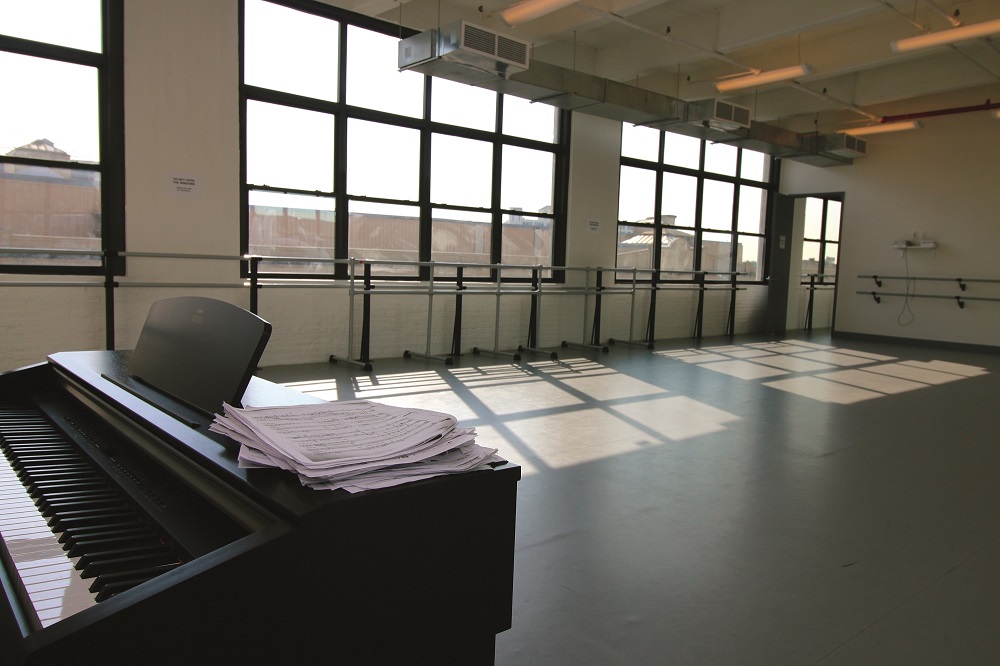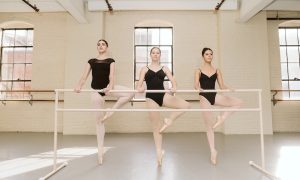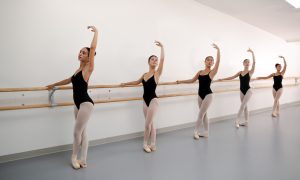If you are a dancer, you’ve heard the term “Marley Floors” at some point. When you think about them, you probably imagine the flooring of your home dance studio, or that performance surface you would roll out for recitals at your local theater growing up. Have you ever wondered how this flooring got its name, though? Where the title “Marley” originated?
One of the lesser-known facets of dance history is the genesis of dance flooring. To learn more about the history of one of the most necessary and used elements of a dance studio, Dance Informa reached out to flooring expert Randy Swartz, the president of Stagestep. He shared the backstory as he knows it, and, as it turns out, Marley floors were invented about 70 years ago in 1948 in Kent, United Kingdom.
Swartz explains, “Once upon a time, there was a company called Marley. They made all things related to polyvinyl chloride (PVC), the basic fundamental product and what we call ‘sheet vinyl’. They made roofing, wall treatments and all types of other things. The story goes that one of the executives of Marley had a daughter who was a professional dancer in Europe, and she complained to her father that at every theater they went to, they’d wind up on a wooden floor that was different from the last one they’d used. It was very difficult for the company to perform on all these different surfaces. So he came up with a product called ‘Stageflor’.”
Swartz says this product was a “reversible, dark grey, lightweight, portable touring floor” designed for professional ballet and contemporary dance. It found great success both in Europe and abroad, expanding the company’s fortune.
“In the beginning, in order to get one of these floors, you had to buy it directly from Marley,” Swartz says. “Hence the term ‘Marley floors’ became ubiquitous with a rollout dance floor. Many years later, every floor ends up being called a ‘Marley floor’ even though the floor itself was originally called ‘Stageflor’.”
What most people don’t realize is that the original Marley floor stopped being produced around 1979. “So there’s nothing that anybody has at this point in time that is that original Marley floor,” Swartz points out. “But it started a whole trend.”
In the beginning, companies would have to wait five months to receive their floor once they ordered it, especially if they were in America or in another location outside the U.K. They would also have to reorder a floor every year.
“Stagestep, our company, was the first to do the paperwork for the companies in the United States to secure their floor,” Swartz remarks. “We would take care of all the custom, duty and transportation issues. As that progressed, we started bringing product into the United States and started shipping it to people all over the country. But even then, it still took four to six weeks for a customer to receive their floor. Today, on the other hand, you can almost get your floor overnight.”
Today, Stagestep and other flooring companies have floors that emulate the original Marley floors. Floors like Bravo Classic and Super Bravo are also reversible, lightweight and portable. Their fiberglass lining is new, though, and this improves stability.
Overall, Swartz points out that dancers today are quite privileged compared to early ballet and modern dancers. Even when these Marley floors were first invented 70 years ago, it was still only professional dancers and ballerinas using them. It took a while for recreational dance studios to catch on.
“The original users of those floors were professional dance companies,” shares Swartz. “At that point, most studios were wood floors, and there were issues. Ballet dancers were using rosin on the floors, and then the modern dancers couldn’t use it because the rosin would irritate their feet and so forth. So eventually what happened was the dancers said they wanted to rehearse on the same floor they were performing on. So that’s how all these floors started to get into all the studios. Now, virtually no one performs on a wood floor on stage, and by and large, unless you are in a tap studio, studios have a vinyl floor.”
Due to this evolution, Swartz argues that floors are safer than they’ve ever been. He notes, however, that there are still a lot of misconceptions about flooring. Similar to the history of dance flooring, not a lot of studio owners, teachers or dancers know the facts on how to properly clean a dance floor.
“People who get dance floors often don’t know how to clean or maintain them,” he says. “Because a lot of floors don’t come with a finish on them, they’re even more subject to damage by vinegar, ammonia, acid tone and other agents people use on them. Bleach is another one. All types of things people use on their floors often destroy them. It makes floors dissolve and become slippery.”
As of last year, Stagestep released a new floor cleaner to add to its maintenance products – Proclean D. This disinfectant kills bacteria, fungus, algae and viruses (even Hepatitis B) without harming floors and walls.
In conclusion, Swartz recommends that everyone in the dance community take the time to learn more about their flooring.
“Everybody just needs to educate themselves,” he says. “Look, you go to dance school and you learn how to dance. You may even be going to college to dance or be preparing to teach. But at no point does anyone teach you about floors. And what’s the only instrument you must have to dance? The floor! Without the floor, you’re not dancing. You can’t dance on a trampoline, a diving board or a rough, uneven surface. You need to dance on an appropriate floor. The better the floor, the more you can do, the longer you last, the more you can learn, the more you’re dancing.”
To learn more about Stagestep, head to www.stagestep.com.
By Chelsea Thomas of Dance Informa.















